Jon Anderson is, quite literally, the voice of Yes, the band whose albums The Yes Album, Fragile, and Close To The Edge are amongst the most beloved of 1970’s progressive rock. Songs from this era co-written by Anderson include “Roundabout”, “Yours Is No Disgrace”, “I’ve Seen All Good People”, “Heart Of The Sunrise”, and many others. He also sang on Yes’ 1983 runaway hit “Owner of a Lonely Heart”. Anderson also had a long-running collaboration with Vangelis of Chariots of Fire fame. Anderson’s first solo album was 1976’s Olias of Sunhillow, and his new solo album called 1000 Hands came out in March of this year.
This interview was for a preview article for Jon Anderson’s concert at the Libbey Bowl in Ojai on 8/30/19. It was done by phone on 8/19/19. (Photo: Deborah Anderson Creative)

Jeff Moehlis: I’ve been enjoying your new album 1000 Hands, which I understand has an interesting history. Could you tell us how that album came together?
Jon Anderson: Basically I started the album in 1990, Christmastime, at Big Bear, which is southeast of LA, up in the mountains at a ski resort. I just invited some friends up to finish some songs I’d been writing with a friend of mine, Brian Chatton. I had a great time. It was a wonderful experience writing songs and being away from the world up there in the mountains. I just knew that the music was pretty good.
By the time the New Year came in, 1991, I had obligations to go on tour with a friend of mine Kitaro, the Japanese composer, and then I went on to perform live with Yes, and I just left the tapes in my garage for 26 years [laughs]. Crazy as it sounds, that’s what happened.
Then this producer got in touch with me, Michael Franklin, who lives in Orlando, and he said, “Look, that album that you were going to make – what happened to it?” I said, “Well, the tapes are in the garage,” and he said, “Send them to me. Let’s see what they sound like.” And it sounded very, very cool, very happening. And he was able to ask different people to play on the album – Chick Corea, the great jazz musician, and the great drummer Billy Cobham, Ian Anderson plays on the album. He even got Steve Howe to play on the last song, and it already had Chris Squire and Alan White on three songs from 1991. The album sort of blossomed when he put all these wonderful musicians on it. Thankfully, my voice sounded exactly the same as it did 30 years ago [laughs]. That’s what happens when you live a happy life.
JM: My favorite song on the album is “Ramalama”. Can you tell us a bit about that song?
JA: That actually came from a series of pieces of music that I do every morning, like a vocal exercise sort of idea. I’ve got a dozen of these songs from over the last couple of years. I just like the idea of waking up, I have breakfast and then I go into my studio and I start doing chanting and vocalizing. It’s sort of based on the pygmies in West Africa – when they go out foraging in the morning and throughout the day, they sing at the same time. I saw this beautiful movie about them, and I just adopted that idea. Musicians are like bees – we go from pollen to pollen, from flower to flower to learn. So these vocalization things came along, and one of them was “Ramalama”. Michael Franklin did a very good production of it. Another one that’s on the album is “Where Does Music Come From” [WDMCF], and again Michael Franklin on a plane to China put all the music together [laughs]. Modern equipment and modern technology.
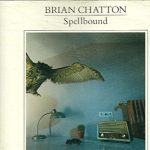
JM: I’ll confess that I don’t know much about Brian Chatton, who you were writing the songs with back in 1990. Could you tell us a bit about him?
JA: I was in a band in the ’60’s called the Warriors, and in 1966 our guitarist left the band and so we went looking for a keyboard player. There was this young 16 year old keyboard player, and he could play “Green Onions”, a famous R&B piece of music. So we said right away, “Well, you’re in” [laughs] because he can play “Green Onions”. He was a cute looking guy, and he made the band look younger, or something like that, or better. He stayed with the band for about four years. The last time I saw Brian was like 10 years ago, when he was on tour with B.B. King. So he’s a great musician, and I just got in touch with him in 1990 to say, “Send me some of your music. Maybe we’ll write some songs together.” And we did.
The thing is, he’s such a funny guy. He’s a crazy, funny guy. He was up there in the mountains with us and we just couldn’t stop laughing because he was just so damn funny. And he’s a great musician, so it was a joyful experience.
JM: Looking at the setlist for your current tour, I see that you’re doing a lot of Yes songs. Is it still fun for you to revisit those songs?
JA: Oh yeah. There’s no question in my mind. I have an eight-piece band, and we can sound like a full orchestra, or we can sound like a big band, or we can sound like an R&B band, a rock band, any kind of band. When we were doing “Yours is No Disgrace”, which is a classic Yes piece, we get the brass section in the middle helping the guitar solo – it just blew my mind. I was able to orchestrate the whole evening, so I have more sounds available to me. One of the classic songs we’re doing is “Wonderous Stories” – it sounds like a totally different piece of music, but it works so beautifully, just making it more surreal if you like. Then we do a classic version of “Starship Trooper”, leading into a piece of music from my solo album called Olias of Sunhillow called “Solid Space”. Everybody started dancing and waving and cheering – it was fantastic.
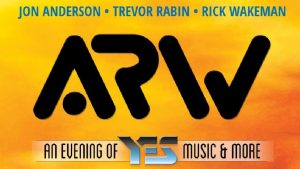
JM: The last time I saw you perform was at the ARW show at the Whisky A Go Go last August, the $2 show.
JA: Oh boy! Oh boy! There was no room on the stage. Rick Wakeman’s keyboards took over the stage!
JM: What was that gig like for you, and what do you remember about the first time you played there when you first came to America?
JA: We played there in 1970, at the Whisky. We did five nights, and I remember it very vividly because the first night there was maybe 100 people, the second night 200 people, and by the end of the week it was sold out, about 700 people. We just got better and better because, like anything, as a young band you don’t really know how good you are until the audience really tells you. You think you’re good, but if the audience doesn’t go crazy after each song you feel like, “OK, well that song doesn’t work. Let’s try another one.” But all the songs worked. Most of them were from the Yes Album, if I remember. So by the end of the week we felt very, very proud to be performing in Los Angeles, and going down well. We got great reviews. That was sort of the beginning of the ’70’s for us, because we toured America from then on [laughs], for years and years.
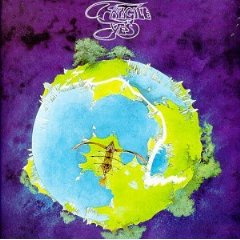
JM: At the Whisky show, the highlight for me was “Heart of the Sunrise”. How did that song originally come together?
JA: It’s very simple actually, because I was writing the song “Love comes to you and you follow”. It’s like a folk song, and I was playing my guitar. Then I heard Bill and Chris doing this “da-da-da-da da-da-da-da-da-da”, and I said to Steve, “Why don’t you join in?” and he joined in a bit. So I went away and started writing the next part in the next room, I came back and they were still playing in the same key, and I said, “Change the key!” So they changed it up, and that’s how it worked. I started saying, “OK, it’s going on a bit, why don’t you just stop, da-da-da-da-da-da da da da-da-da-da” and then get on with it.” They said, “Can you sing that again, Jon?”
All those sort of stop gaps and things come from Stravinsky’s music, actually. I was very into “Petrushka” – I loved that piece of music. So like a bee you take music from this flower, from that flower, and you just mold it into a new idea, and that’s what I always did with Yes.
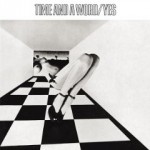
JM: I notice on the setlist of what you’ve been performing on this tour, you’ve been doing “Sweet Dreams”. I always felt that the album that came from, Time and a Word, is underappreciated. What are your reflections on that album?
JA: It was our second album. The first album we felt was OK. The album cover was better than the music [laughs] – something like that. But the second album, I wanted to do it with an orchestra. I don’t know why. I was in love with the modern mellotron at the time, the modern keyboard sounds of the Moog, that kind of thing. And I thought, “Wouldn’t it be great to get an orchestra behind the band”, which we did. And some of it sounded really, really good.
Then, when we were rehearsing this tour, we have an acoustic section in the middle of the show where I sing a couple of songs from Olias, and then I said, “Let’s do ‘Sweet Dreams'”, and the guitarist started playing it. He knew it inside and out, and I said, “That’s perfect! But you’ve got to do it on a 12-string.” And he did. We thought that the next song that we should do is “Long Distance Runaround”, and doing it slightly different from the record so it fits into an acoustic section right in the middle of the show. And we just added “Wonderous Stories” a couple of weeks ago, which was nice.
With an eight-piece band that can play and sound like a full orchestra and a big band, you can actually mold them into making Yes songs sound a little bit like 21st Century music. I know it sounds crazy, but I’ve always wanted to expand certain songs into bigger sounding projects. And even the opposite, to make songs very acoustic and folk style. So I’m very happy about the band I’m working with. They’re really wonderful people, and they’re from all over the world, actually. It’s pretty amazing.
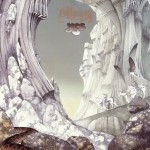
JM: I know you often close your shows with the song “Soon”, and I’m probably in the minority but I think that Relayer, which that’s from, may be my favorite Yes album. What are your memories of making Relayer, and how do you see that fitting into the story of Yes?
JA: We’d just had this really difficult time. Rick had left the band under a little cloud of the question of making the album called Tales from Topographic Oceans, which was heavily criticized. A lot of people actually loved it. I’m still mesmerized when young people come up and say, “I got this album four years ago. I love this album. How did you do it?” And then somebody will come with the Relayer album and say, “Why did you write ‘Gates of Delirium’?” [laughs] It’s like, why do you do anything? It’s an adventure.
I’m happy that you like it, because it was meant to be a very important statement, an anti-war piece of music, and then at the end, after the gigantic chaos of war and the sadness of war was this song “Soon oh soon the light”. The reason we live is to find the light, the Divine Energy, and that’s what the song is about. So I sing it at the end of each show, and I’ll probably do it in Ojai because it’s around the corner from where I live [laughs].
JM: What advice would you give to an aspiring musician?
JA: Very simple. You practice, you practice, and then… you practice more. [laughs] It’s that’s simple. You practice what you do. And you’ve got to believe in what you do. Don’t worry about what you’re told to do. You can’t say, “Oh, you’ve got to write a hit record or else you’ll be nothing.” That’s a joke. To be a pop star is very rare, and there’s just a handful of pop stars that are still around. In ten years there will be another handful of pop stars. That’s different kind of music. There’s more music in this world than we can ever imagine.
I could go on and on, but I won’t. But people who might be reading this, please come to the show in Ojai, because it’s going to be tremendous, and it’s just going to be a wonderful night out. So come out and see the show.
JM: You live on the Central Coast. What inspired you to make the move here?
JA: Very simple – my beautiful wife Janee, who I met some 27 years ago in Los Angeles. I fell in love with her when I first met her, and she’s the most wonderful thing that’s happened in my life. And she just happened to have a sister who lived in San Luis Obispo with her husband who is a professor at Cal Poly. So we would go out to San Luis Obispo every month, or maybe once every couple of months, just to see them and spend a weekend with them. And I fell in love with San Luis Obispo and the energy there. It’s a college town, and it’s got a very youthful energy about it. And I saw this police car pushing an old VW bus. He was pushing it to try to get it going, and I thought, “A police car pushing his car trying to get it going – I could live here.”
JM: Do you have anything else in the works?
JA: I’m working on five projects at the moment. I’ve been doing it for the last 15 years, since the advent of the internet where I work with different musicians around the world, creating projects. Most of them are story-telling projects. And when I get home in two weeks time after Ojai, I’ll spend a lot of time creating new projects, new ideas. But I have at least five major projects. I’ve got to get them finished by next year, or they’ll drive me crazy.


This is such a wonderful and amazing interview. I was in high school in the 60’s and in my opinion Yes is one of the best bands of all time. I have been to a few of their concerts over the years and have recently been watching all of the concerts that are available on YouTube. I live in south Florida and Jon was at Epcot in March and I didn’t get to go. I also missed ARW at the Kravis center in west Palm beach. I am hoping that he and his band will come to Florida (also Ohio where I have family). Thank you so much